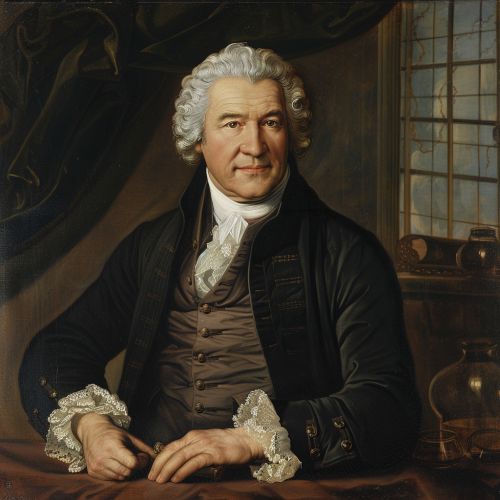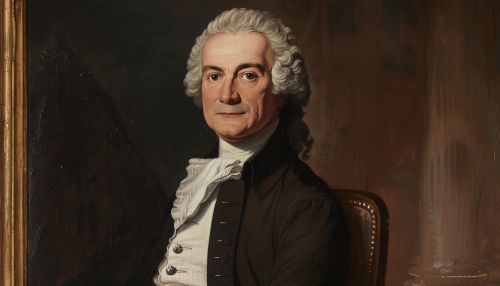Martin Heinrich Klaproth
Early Life and Education
Martin Heinrich Klaproth was born on December 1, 1743, in Wernigerode, a town in the Harz mountains of Germany. His early education was influenced by the scientific environment of the time, which was heavily dominated by the principles of alchemy and the nascent field of chemistry. Klaproth's initial foray into the world of science began with an apprenticeship under an apothecary, where he gained practical knowledge in the preparation of medicines and chemical substances.
Career and Contributions
Discovery of Elements
Klaproth is best known for his discovery of several chemical elements. In 1789, he discovered uranium while analyzing the mineral pitchblende. He named the element after the planet Uranus, which had been discovered just eight years earlier. His meticulous methods allowed him to isolate uranium oxide, though he did not succeed in isolating the pure metal.
In the same year, Klaproth also discovered zirconium in the mineral zircon. He was able to identify the new element by its unique chemical properties, although, like uranium, he did not isolate it in its pure metallic form. His work on zirconium was published in 1795.
Additionally, Klaproth is credited with the discovery of titanium in 1795. He identified the element in the mineral rutile and named it after the Titans of Greek mythology. His identification of titanium was based on its distinct chemical behavior and properties.
Analytical Techniques
Klaproth's contributions to analytical chemistry were profound. He was a pioneer in the use of precise quantitative methods to analyze chemical compounds. His work laid the groundwork for modern quantitative analysis in chemistry. Klaproth's meticulous approach to chemical analysis involved careful measurement and documentation, which was a significant departure from the more qualitative methods used by his contemporaries.
Academic and Professional Roles
Klaproth held several prestigious positions throughout his career. In 1782, he became a member of the Prussian Academy of Sciences. He was appointed as a professor of chemistry at the University of Berlin in 1810, where he continued his research and teaching until his death. Klaproth's lectures and publications were highly influential, and he was regarded as one of the leading chemists of his time.
Scientific Philosophy and Methodology
Klaproth's scientific philosophy was grounded in empirical observation and rigorous experimentation. He believed in the importance of reproducibility and accuracy in scientific research. His methods were characterized by careful measurement, thorough documentation, and a systematic approach to experimentation. Klaproth's insistence on precision and his use of quantitative techniques helped to establish chemistry as a rigorous and exact science.
Legacy and Impact
Klaproth's discoveries and methodologies had a lasting impact on the field of chemistry. His identification of new elements expanded the periodic table and contributed to the understanding of the composition of matter. His analytical techniques set new standards for chemical research and paved the way for future advancements in the field.
Klaproth's work also had practical applications. The elements he discovered, such as uranium and titanium, have since found numerous uses in various industries. Uranium, for example, is a key element in nuclear energy, while titanium is valued for its strength and corrosion resistance in aerospace and medical applications.
Personal Life
Martin Heinrich Klaproth was known for his modest and diligent nature. He was deeply committed to his scientific work and maintained a humble lifestyle. Despite his significant contributions to chemistry, he remained focused on his research and teaching, avoiding the limelight.
Death and Commemoration
Klaproth passed away on January 1, 1817, in Berlin. His contributions to chemistry have been commemorated in various ways. Several scientific institutions and awards have been named in his honor, recognizing his impact on the field. Klaproth's legacy continues to be celebrated by chemists and scientists around the world.


